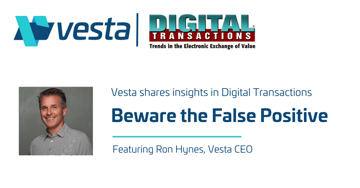.png?width=960&name=DT_ver2%20(1).png) Fighting real-time fraud: Interview with Vesta
Fighting real-time fraud: Interview with Vesta
Real-time, instant payments are praised lately for being more convenient for the consumer to use, and very affordable for the merchant to accept these payment methods. But how secure are these transactions since there is a shorter time to review? Have fraudsters explored any loopholes so far?
While real-time payments come with a variety of benefits, they also bring some notable drawbacks, particularly when it comes to security and risk measures. What merchants need to be aware of is that although instant payments can provide immediate customer satisfaction, they can also be responsible for instant fraud. With instant payments, the merchant has to decide whether to accept the transaction in real time, and once they make the decision, they can’t undo it. Unlike other types of fraud, money recovery for instant payment fraud is impossible. To accommodate instant payments while keeping fraudsters at bay, merchants need to use advanced machine learning to vet transactions in real time.
What about chargebacks and friendly fraud? Can these issues be disputed in the same manner as when a card transaction is involved?
Friendly fraud can often be a misunderstanding, and consumers simply don’t remember making a purchase or someone else who is an authorised user of their card makes the purchase and they are unaware. It’s typical for a consumer who sees a charge on their credit card statement that they don’t recognise to dispute it, even if it’s a legitimate purchase that they made. If the descriptor that shows up on their bank statement is completely different from your company name, that’s an immediate red flag for consumers and will likely lead to increased levels of these sorts of incidents.
To prevent friendly fraud, it’s important to be clear and transparent. Be sure to include your business or store name as part of the descriptor so your customers will be able to easily identify where the charge is coming from and avoid any surprises when they look through their bank statement.
Chargebacks, on the other hand, are more likely to be exploited by fraudsters for personal gain. If the dispute is won by the customer, not only does the merchant lose the revenue from that sale, but they also lose the merchandise that was delivered to the fraudster. Moreover, if a business incurs a large number of chargebacks, the credit card company could blacklist the merchant altogether or subject the business to increased card processing fees.
How can machine learning be leveraged to prevent fraud in this space? Does a combination with rules technology work as well?
Fraudsters don’t operate from a single location – they’re all over the world, so your machine learning models need to have a global outlook. This is particularly crucial for CNP fraud with indirect linkage, since there is no clear sign for merchants to watch for.
Data from our recent Global Card-Not-Present (CNP) Fraud Report found that fraudulent transactions with indirect linkage are on the rise with the percentage of overall fraud with indirect linkage increasing steadily quarter-by-quarter through all of 2020. And to make matters even more difficult, the value of fraudulent transactions with indirect linkage is generally higher than those with direct linkage, making it an even more expensive and complicated problem for merchants to deal with.
Read the full interview here.
.png)
.png)
%20(1).png)


